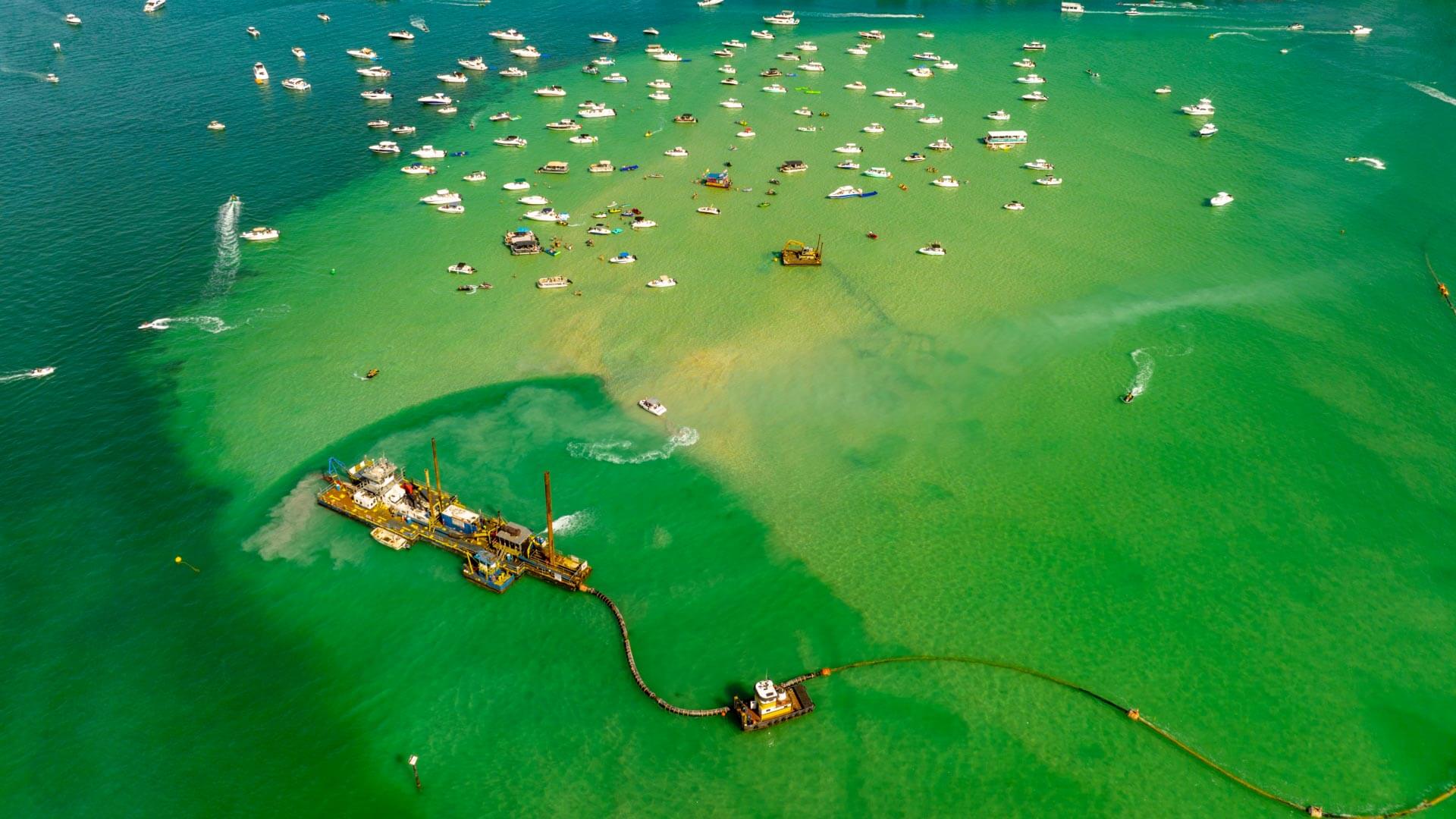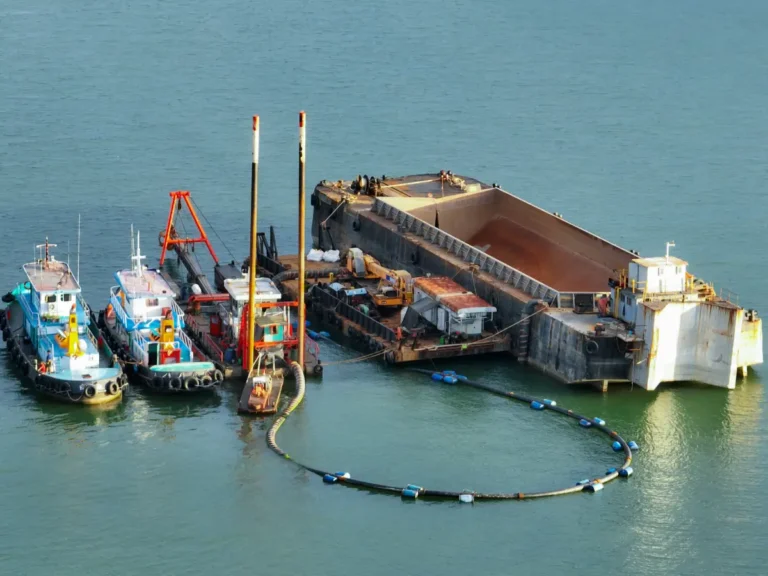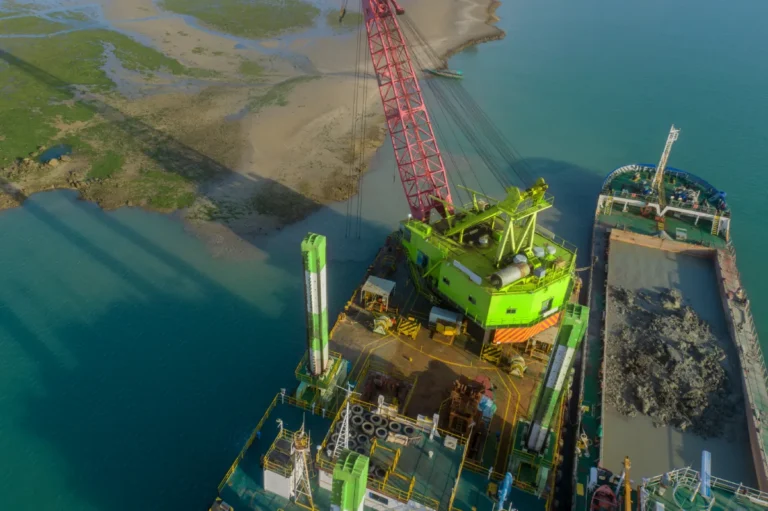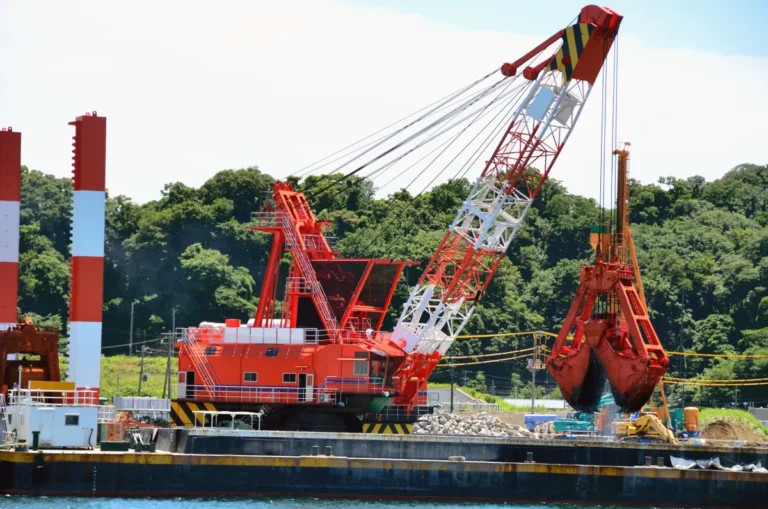High-risk dredging projects present unique challenges that demand the utmost attention to safety and regulatory compliance. Whether dealing with contaminated sediments, working near critical infrastructure, or operating in environmentally sensitive areas, these projects require precise planning and execution to avoid accidents, environmental damage, and legal penalties. For these reasons, the expertise of professional dredging companies is essential to ensure both safety and success.
Dredging companies play a crucial role in mitigating risks associated with these complex projects. By leveraging advanced equipment, comprehensive risk assessments, and detailed regulatory knowledge, they deliver solutions that prioritize safety without compromising efficiency. These companies are equipped to handle intricate tasks while adhering to the strict environmental and safety standards that govern high-risk dredging activities.
Working with skilled dredging contractors and an experienced dredging consultant is key to ensuring project success. Contractors execute operational tasks with precision, while consultants provide strategic insights and regulatory guidance. Together, they form a cohesive team capable of addressing the most challenging dredging scenarios. Their combined expertise minimizes risks, ensures compliance, and lays the groundwork for sustainable and effective project outcomes.
Understanding High-Risk Dredging Projects
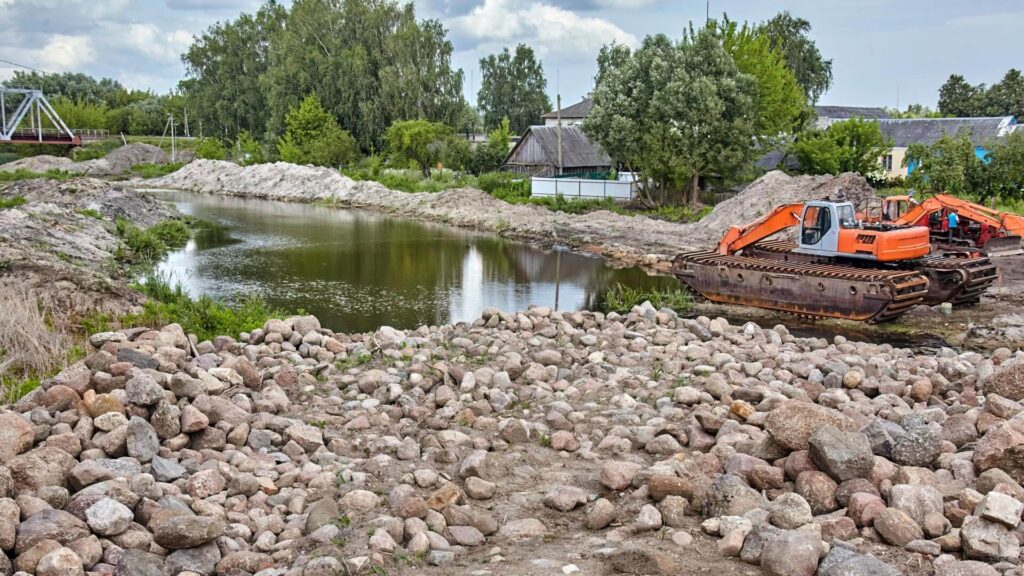
Not all dredging projects are created equal. Some involve significant risks that require specialized expertise to address. High-risk projects involve complexities such as handling hazardous materials, operating in environmentally sensitive areas, or working near critical infrastructure like bridges, ports, or pipelines. These challenges demand the involvement of experienced dredging companies to ensure safety, compliance, and project success.
What Makes a Dredging Project High-Risk?
A dredging project is considered high-risk when it involves:
- Hazardous Materials: Projects requiring the removal of contaminated sediments laden with heavy metals, industrial chemicals, or other pollutants pose serious risks to human health and the environment.
- Environmental Sensitivity: Working in areas such as wetlands, wildlife habitats, or protected marine ecosystems demands careful planning to minimize ecological disruption.
- Infrastructure Proximity: Dredging near critical structures, including harbors, bridges, and underwater utilities, requires precision and the ability to mitigate risks of damage or operational interference.
Key Challenges in High-Risk Dredging Projects

- Handling Contaminated Sediments
One of the primary challenges is safely removing and managing contaminated materials. Improper handling can result in sediment resuspension, spreading pollutants to other areas and causing further harm. Professional dredging companies, supported by dredging contractors and a knowledgeable dredging consultant, use advanced containment and treatment methods to mitigate these risks and ensure compliance with environmental regulations.
- Navigating Regulatory Requirements
High-risk dredging projects are subject to stringent local, state, and federal regulations. From obtaining permits to meeting water quality standards, dredging companies must navigate a complex web of compliance measures. A qualified dredging consultant plays a vital role in guiding the project through these regulatory processes, ensuring all legal obligations are met while avoiding costly fines or delays.
- Protecting Ecosystems and Nearby Communities
Preserving the surrounding environment and safeguarding nearby communities are critical priorities in high-risk projects. Dredging activities must be carefully controlled to prevent harm to aquatic life, water quality, and residents. Professional dredging contractors implement eco-friendly practices, such as using precision dredging equipment and real-time monitoring systems, to minimize disruption and maintain public trust.
The Role of Dredging Companies in Ensuring Safety
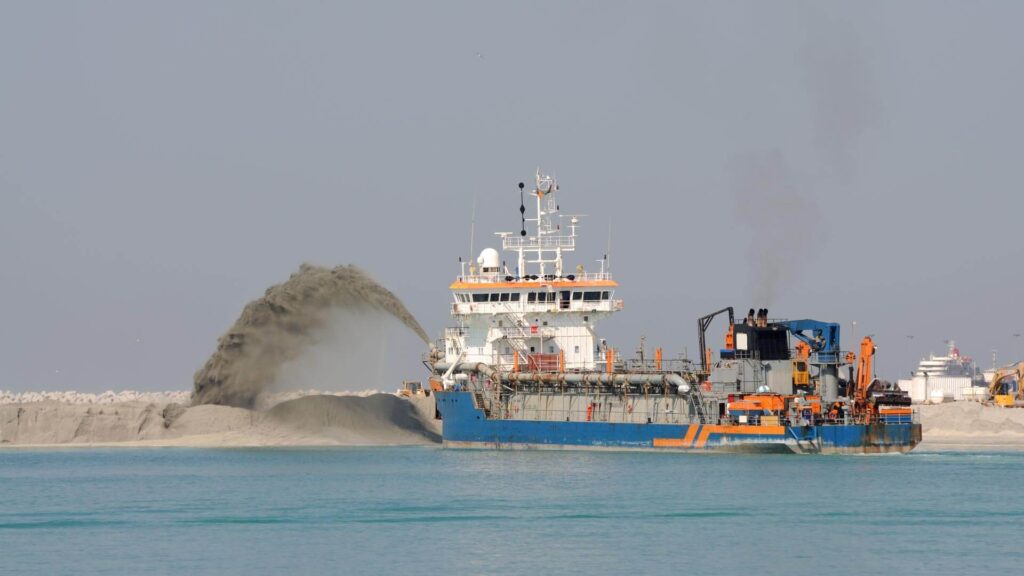
High-risk dredging projects demand a meticulous focus on safety, requiring dredging companies to adopt proactive measures that protect workers, the environment, and surrounding communities. By conducting comprehensive risk assessments, providing specialized training, and leveraging advanced technology, these companies ensure that even the most challenging projects are executed securely and efficiently.
Comprehensive Risk Assessments
Before any dredging project begins, site conditions must be thoroughly evaluated. Risk assessments identify potential hazards such as contaminated sediments, unstable structures, or sensitive ecosystems. This step allows dredging companies to develop tailored strategies to address project-specific risks effectively.
Collaboration between dredging contractors and an experienced dredging consultant is crucial during this phase. Contractors contribute operational expertise, while consultants bring strategic insights into safety protocols and regulatory compliance. Together, they create a comprehensive risk management plan that minimizes threats and ensures smooth project execution.
Specialized Training
The safety of a dredging operation heavily depends on the skill and preparedness of its personnel. Dredging companies prioritize ongoing safety training for operators and crew members, ensuring they are equipped to handle high-risk scenarios. Training programs cover essential topics such as equipment operation, emergency response, and handling hazardous materials.
Certifications are another critical aspect of high-risk dredging projects. Qualified dredging contractors must hold industry-recognized certifications that demonstrate their competency in adhering to safety standards and environmental regulations. This ensures that all project personnel meet the highest levels of professional expertise.
Advanced Equipment and Technology
Modern technology significantly enhances the safety of dredging projects. Dredging companies utilize precision tools and real-time monitoring systems to minimize risks during operations. These systems provide detailed data on sediment removal, water quality, and equipment performance, allowing for accurate adjustments as needed.
Innovations in eco-friendly and safer dredging machinery further contribute to safety. Equipment such as cutter suction dredgers with minimal sediment resuspension or electric dredging systems with reduced emissions helps protect both workers and the environment. These technological advancements are a testament to the industry’s commitment to sustainable and secure dredging practices.
Dredging companies establish robust safety protocols through detailed planning, rigorous training, and cutting-edge technology to ensure the success and integrity of high-risk projects.
Compliance with Regulatory Standards
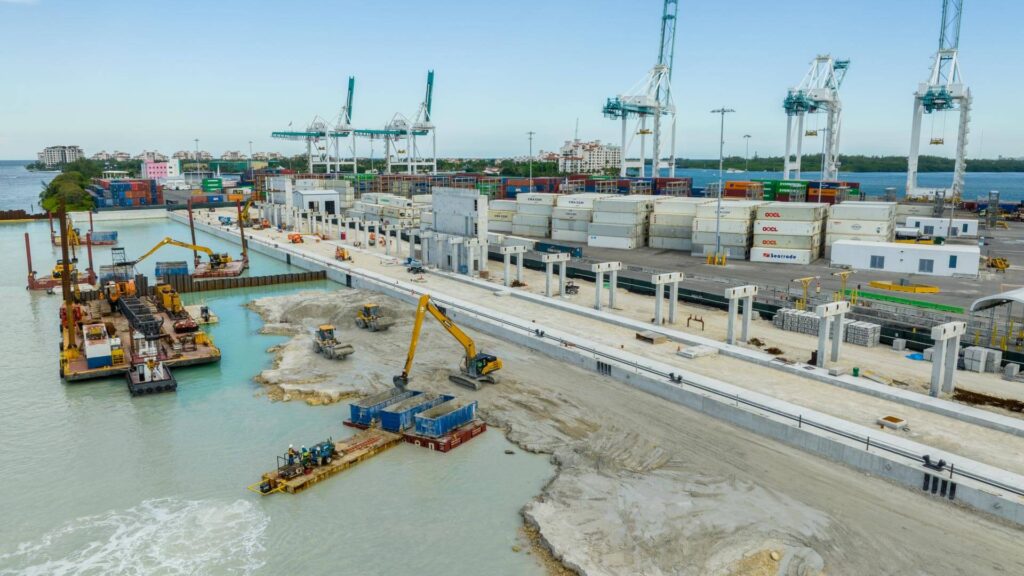
High-risk dredging projects are governed by a complex web of local, state, and federal regulations designed to protect the environment, public health, and surrounding communities. Ensuring compliance with these standards is a critical responsibility for dredging companies, requiring expertise, meticulous planning, and collaboration with regulatory agencies.
Navigating Complex Regulations
Dredging projects often involve sensitive environments and significant public interest, making adherence to regulatory standards non-negotiable. Dredging companies must comply with laws addressing sediment management, water quality, and habitat protection. These regulations vary across jurisdictions, so it is essential to have a clear understanding of local, state, and federal requirements.
Partnering with an experienced dredging consultant can streamline this process. Consultants provide valuable guidance on regulatory expectations, help interpret legal frameworks, and develop strategies to ensure compliance. By working closely with dredging contractors and consultants, companies can anticipate potential challenges and address them proactively.
Permitting Process
Securing the necessary permits is one of the most critical steps in regulatory compliance. Dredging projects typically require environmental and safety permits, which may include:
- Environmental impact assessments (EIA).
- Water discharge permits.
- Wildlife protection approvals.
Professional dredging companies excel in managing the permitting process, ensuring that all required documentation is accurate and submitted on time. Transparent reporting and communication with regulatory agencies help build trust and avoid delays caused by incomplete or insufficient information.
Environmental Safeguards
Protecting aquatic ecosystems and wildlife is a cornerstone of regulatory compliance for dredging projects. Dredging companies implement a range of environmental safeguards, including:
- Precision Dredging: Using advanced equipment to minimize sediment resuspension and disturbance to nearby habitats.
- Real-Time Monitoring: Continuously tracking water quality, sediment levels, and ecosystem health throughout the project.
- Mitigation Measures: Develop plans to restore or compensate for any unavoidable environmental impacts.
By combining technical expertise with a commitment to sustainability, dredging contractors and consultants work together to meet regulatory standards while protecting natural resources. These efforts not only ensure compliance but also reinforce the role of dredging companies as stewards of environmental preservation.
Collaboration Between Dredging Companies, Contractors, and Consultants
Effective collaboration between dredging companies, dredging contractors, and dredging consultants is crucial for the success of complex projects. Each stakeholder brings unique expertise to the table, and their combined efforts ensure projects are executed efficiently, safely, and in compliance with environmental regulations.
Synergistic Roles
The success of a dredging project depends on the seamless integration of tasks and strategies. Dredging contractors focus on the hands-on execution of tasks such as sediment removal, equipment operation, and on-site safety management. Their technical skills and experience ensure that day-to-day operations run smoothly.
Conversely, dredging consultants provide strategic insights and guidance. They conduct site assessments, develop risk management plans, and ensure compliance with regulatory standards. By identifying potential challenges and designing tailored solutions, consultants empower contractors to execute tasks effectively while minimizing risks and disruptions.
Together, dredging companies leverage the strengths of contractors and consultants to deliver comprehensive solutions. This synergistic approach ensures that every aspect of the project—from planning to execution—is handled with precision and expertise.
Value of Communication
Clear communication and coordination among stakeholders are essential for project success. Dredging companies act as central facilitators, ensuring that contractors and consultants stay aligned on project goals, timelines, and responsibilities. Regular updates and open communication channels help anticipate and resolve potential issues before they escalate.
This collaborative environment fosters trust and accountability, allowing each party to focus on their specialized role while contributing to the project’s overall success. By maintaining strong coordination, dredging companies ensure that projects are completed on time, within budget, and to the highest safety and environmental standards.
DDredging contractors, consultants, and companies partner to partner to transform complex dredging projects into successful outcomes through a combination of strategic planning, technical execution, and effective communication.
Benefits of Choosing Reputable Dredging Companies for High-Risk Projects
Partnering with reputable dredging companies is essential for the success of high-risk dredging projects. These companies combine expertise, advanced technology, and a commitment to safety, ensuring that complex operations are managed effectively while adhering to environmental and regulatory standards.
Risk Mitigation
High-risk dredging projects come with inherent challenges, including handling contaminated sediments, operating in sensitive environments, and managing potential hazards. Reputable dredging companies excel in mitigating these risks through detailed planning, expert handling, and the use of advanced equipment. Their ability to anticipate and address potential issues reduces the likelihood of accidents, delays, and unforeseen complications, ensuring smooth project execution.
Regulatory Confidence
Compliance with environmental and safety standards is non-negotiable in high-risk dredging projects. Trusted dredging companies work closely with dredging contractors and a skilled dredging consultant to navigate complex regulatory frameworks. From obtaining permits to implementing real-time monitoring systems, these companies ensure that every aspect of the project meets or exceeds legal requirements. This proactive approach protects clients from costly fines, legal disputes, and reputational damage.
Cost Savings
While hiring reputable dredging companies may seem like a higher upfront investment, it often leads to significant cost savings in the long run. Their expertise minimizes the risk of project overruns, reduces the need for costly rework, and ensures efficient resource use. Additionally, their ability to manage regulatory compliance and mitigate risks eliminates the financial burden associated with non-compliance, accidents, or delays.
Sustainability Goals
Eco-conscious practices are increasingly important in modern dredging projects. Leading dredging companies prioritize sustainability by employing environmentally friendly techniques, using low-emission equipment, and implementing sediment reuse programs. These measures not only protect natural habitats but also align with broader environmental goals, making them ideal partners for organizations committed to sustainability.
By choosing a reputable dredging company, clients gain a trusted partner capable of delivering safe, compliant, cost-effective, and sustainable solutions for even the most high-risk dredging projects.
Future Trends in Safety and Compliance for Dredging Companies
As the dredging industry evolves, dredging companies are adopting new approaches to enhance safety and compliance in their operations. Leveraging advanced technologies, fostering stronger collaborations, and adapting to stricter regulations are shaping the future of dredging, especially in high-risk and environmentally sensitive projects.
Technological Advancements
The integration of cutting-edge technologies such as artificial intelligence (AI) and the Internet of Things (IoT) is revolutionizing safety and risk management in dredging. Dredging companies are deploying AI-driven systems for predictive analytics, enabling them to anticipate potential hazards and optimize operations.
IoT-enabled sensors are being used to monitor equipment performance, sediment levels, and environmental conditions in real-time. These technologies help dredging contractors minimize risks, reduce sediment resuspension, and ensure precise execution. By combining AI and IoT, dredging operations are becoming smarter, safer, and more efficient, setting a new standard for safety and compliance.
Enhanced Collaboration Models
The relationship between dredging contractors and dredging consultants is becoming increasingly collaborative. As projects grow more complex, this partnership is vital for integrating operational expertise with strategic planning. Enhanced collaboration models involve:
- Jointly developing risk management strategies.
- Sharing real-time data for better decision-making.
- Coordinating efforts to streamline regulatory compliance.
By fostering closer partnerships, dredging companies can deliver more cohesive and effective solutions, ensuring safety and adherence to environmental standards throughout a project’s phases.
Evolving Regulations
Environmental and safety standards in the dredging industry are becoming more rigorous, reflecting global concerns about climate change, pollution, and biodiversity. Dredging companies must adapt to these changes by continually updating their practices and processes to meet new requirements.
This includes adopting low-emission dredging equipment, implementing advanced sediment containment methods, and complying with stricter environmental impact assessments. The guidance of an experienced dredging consultant is invaluable in navigating these evolving regulations and ensuring that projects remain compliant with the latest standards.
By embracing technological advancements, strengthening collaboration, and adapting to new regulatory landscapes, dredging companies are positioning themselves as leaders in safe and sustainable dredging practices. These trends highlight a commitment to protecting ecosystems, supporting innovation, and ensuring the long-term success of dredging projects.
Conclusion
Dredging companies play a vital role in ensuring safety and compliance in high-risk dredging projects. Their expertise in handling complex operations, mitigating risks, and adhering to stringent environmental and safety standards is essential for successful project outcomes. By leveraging advanced technologies, fostering collaboration between dredging contractors and dredging consultants, and staying ahead of evolving regulations, these companies provide effective and sustainable solutions for even the most challenging dredging scenarios.
For stakeholders embarking on high-risk dredging projects, partnering with experienced contractors and a skilled consultant is key to achieving safe, compliant, and efficient operations. These professionals bring the technical knowledge, strategic insights, and dedication needed to navigate complexities and deliver results that align with regulatory and environmental expectations.
The dredging industry’s commitment to safety, compliance, and sustainability will continue to shape its future. By prioritizing these principles, dredging companies ensure that they remain trusted partners in protecting ecosystems, supporting infrastructure, and fostering long-term environmental stewardship.

